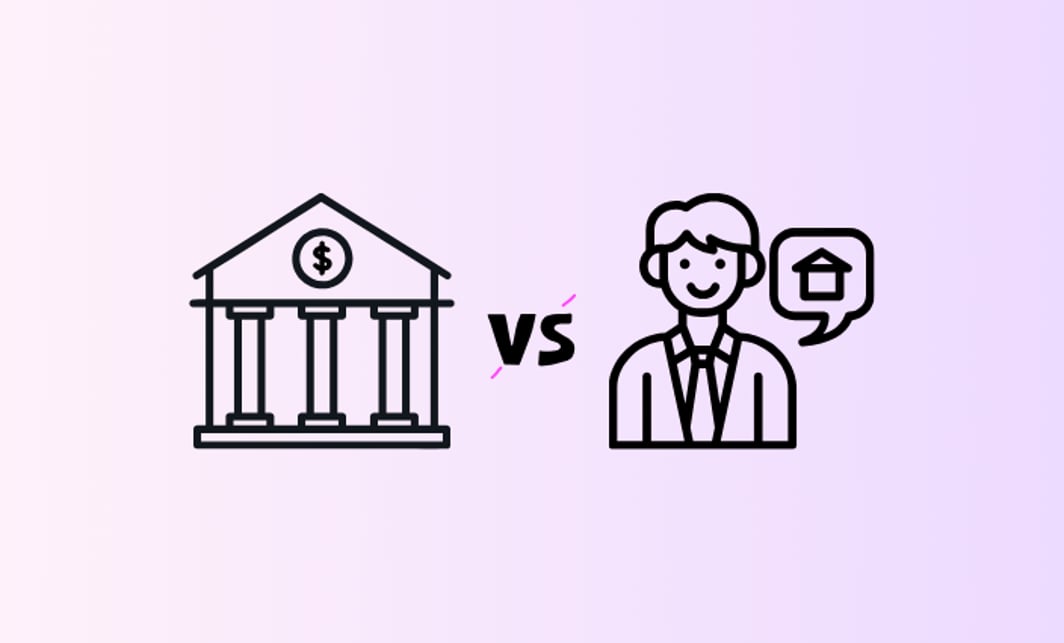What is Borrowing Capacity & Why It Matters
Borrowing capacity is the maximum amount a lender is willing to lend you to buy a home.
In Australia’s competitive housing market, understanding your borrowing capacity is critical—it affects:
- How much you can borrow
- The properties you can realistically consider
- Your chances of loan approval
- Your overall financial stability
Lenders use borrowing capacity as a safeguard to ensure you can repay your loan without falling into financial hardship. Knowing your borrowing limit before applying can save time, reduce rejection risk, and help you make more strategic property decisions.
Main Factors Influencing Borrowing Capacity
Several factors work together to determine how much you can borrow in Australia’s home loan market:
- Creditworthiness and Income Factors: Credit scores, employment stability, income verification, and inclusion of non-traditional incomes.
- Lending Policies and Regulatory Environment: Debt-to-income ratios, serviceability buffers, contingent liabilities, and prudential regulations by APRA and ASIC.
- Collateral Valuation and Regional Influences: Property valuations, loan-to-value ratios, and regional economic and climate risks.
- Borrower Behaviour and Financial Resilience: Cash flow management, emergency funds, risk tolerance, financial literacy, and behavioural biases.
This article delves into each of these elements, providing practical insights tailored to the current Australian home loan context.
Credit Score & Income Factors Affecting Borrowing Capacity
Impact of credit score on borrowing capacity
Credit scores are pivotal in lenders’ risk assessments. A strong credit score signals financial responsibility and reduces perceived default risk, enabling access to larger loan amounts and more competitive interest rates. Conversely, a low credit score constrains borrowing capacity due to higher risk premiums and stricter lending criteria.
Recent Reserve Bank of Australia (RBA) data indicates a forecasted decline in credit quality for 2024, prompting lenders to tighten standards, especially for applicants with weaker credit profiles. Elevated housing loan arrears exacerbate this tightening by signalling borrower stress, which can reduce credit supply even to creditworthy applicants.
For borrowers, maintaining or improving credit scores is essential to maximise borrowing capacity. Mortgage brokers should advise clients to regularly monitor credit reports, address delinquencies, and avoid behaviours that negatively impact creditworthiness.
Employment stability and income verification
Lenders place significant emphasis on employment stability and the verifiability of income. Stable, ongoing employment—preferably permanent or long-term contracts—enhances borrowing prospects by reducing income uncertainty. In contrast, casual or contract employment with fluctuating income can reduce borrowing capacity.
In the current Australian market, lenders have intensified income verification processes post-2019, reflecting heightened risk aversion. Borrowers with consistent, verifiable pay slips or tax returns demonstrate lower risk. Notably, lower-income borrowers (earning under AUD 93,000 combined) often show reduced capacity to adjust budgets or build savings, increasing their vulnerability.
Mortgage brokers should guide clients to prepare comprehensive income documentation and, where possible, seek employment arrangements that provide income stability prior to loan applications.
Incorporation of non-traditional income sources
Non-traditional income sources such as gig economy earnings, rental income, investment dividends, and government payments are increasingly considered by lenders. However, these require stringent documentation:
- Rental Income: Verified through rental statements or bank deposits.
- Gig Economy Income: Supported by tax returns, bank statements, and contracts.
- Investment Income: Documented via dividend statements or interest receipts.
- Government Payments: Verified by official letters or payment summaries.
Lenders apply serviceability buffers to these incomes, assessing the borrower's ability to repay under stressed conditions (e.g., interest rates 3% above the loan rate).
Mortgage brokers should assist clients in compiling robust evidence of such income streams to enhance borrowing capacity.
Meeting minimum credit and income thresholds
Banks generally require borrowers to meet minimum credit score and income documentation thresholds to qualify for loans. While exact numeric cutoffs vary across lenders and products, failure to meet these minimums typically results in loan denial or reduced borrowing capacity.
Mortgage brokers play a vital role in matching borrowers with lenders whose credit and income criteria align with their profiles, thereby optimising borrowing outcomes.
Australian Lending Rules, APRA Guidelines & Borrowing Limits
Debt-to-Income ratios and serviceability buffers
Debt-to-income (DTI) ratios and serviceability buffers are core metrics used by lenders to assess repayment capacity. APRA prudential standards encourage conservative lending, requiring banks to assess borrowers' ability to service loans at interest rates at least 3 percentage points higher than the contracted rate, ensuring resilience to rate hikes.
Non-bank lenders have recently relaxed some serviceability requirements to drive lending volumes, but banks maintain stringent buffers. Borrowers with high leverage (LVR > 80% or LTI > 4) or low incomes face tighter borrowing capacity due to increased vulnerability and limited savings buffers.
Mortgage brokers should emphasise the importance of maintaining manageable debt levels and advise clients on realistic borrowing limits based on serviceability assessments.
Verification and treatment of contingent liabilities
Contingent liabilities, such as credit card limits and personal guarantees, impact borrowing capacity by representing potential future financial obligations. APRA and ASIC guidelines require lenders to verify these liabilities rigorously, often applying credit conversion factors to estimate potential drawdowns.
For example, even unused credit card limits are factored into capacity calculations due to their potential to become drawn upon, increasing repayment obligations.
Borrowers should disclose all contingent liabilities accurately and work with brokers to understand their effects on borrowing limits.
Regulatory guidelines on income verification and lending practices
ASIC and APRA provide ongoing guidance to ensure prudent lending practices, including thorough income verification, especially for non-traditional income streams. These regulators emphasise the use of reliable, electronic documentation and stress testing of borrower capacity to withstand economic shocks.
Mortgage brokers should stay abreast of regulatory updates to ensure compliance and advise clients accordingly.
Effects of economic cycles and regulatory changes on lending standards
Economic indicators such as GDP growth slowdown and rising unemployment influence lenders’ risk appetite. The RBA forecasts moderated GDP growth and increased unemployment, prompting lenders to adopt conservative lending policies with lower borrowing capacity limits.
Regulatory interventions have also tightened credit assessments to safeguard financial stability, resulting in more cautious loan approvals and stricter collateral requirements.
Borrowers and brokers must factor in these macroeconomic trends when planning loan applications and property purchases.
Property Valuations, LVR & Regional Borrowing Factors
Impact of property valuations on maximum loan amounts
Property valuations determine the maximum loan amount lenders are willing to offer via loan-to-value ratios (LVR). Higher property valuations support larger loans, while declining or volatile valuations constrain borrowing capacity to avoid negative equity risk.
Scenario analyses show that even with potential housing price declines (e.g., 30% fall), lenders maintain cautious LVR policies, with negative equity loans estimated to rise to only around 9% in severe downturns.
Mortgage brokers should ensure that clients understand valuation impacts and encourage conservative borrowing aligned with realistic property price expectations.
Regional valuation adjustments and climate risks
Lenders adjust collateral valuations regionally based on house price trends and emerging physical risks like climate change. Properties in areas exposed to floods, bushfires, or prolonged climate risks face higher lending losses, prompting lenders to apply more conservative valuations or restrict lending in vulnerable regions.
Borrowers targeting properties in such regions should anticipate stricter borrowing capacity limits and seek expert advice on collateral risk assessments.
Borrower Behaviour, Financial Resilience, and Risk Management
Effects of loan repayments on cash flow and savings goals
Loan repayments, especially amid rising interest rates, directly affect borrower cash flow and capacity to save. Vulnerable borrowers with variable-rate loans and high leverage experience pronounced cash flow pressures, though overall financial stress is expected to ease by mid-2026.
High leverage magnifies repayment burdens and constrains savings, requiring careful budgeting and repayment planning.
Mortgage brokers should help clients develop cash flow models and recommend repayment strategies such as increased repayment frequency to reduce long-term interest costs and financial strain.
Emergency fund benchmarks for high-leverage borrowers
Given rising household debt payments, high-leverage borrowers are advised to maintain emergency funds covering 6 to 12 months of essential expenses to buffer against interest rate volatility and income shocks.
Financial planners recommend surpassing traditional 3-6 month benchmarks to enhance resilience.
Mortgage brokers should promote emergency fund planning as integral to sustainable borrowing.
Borrower risk tolerance and its influence on borrowing decisions
Borrower risk tolerance shapes borrowing decisions by influencing loan size preferences and product choices. Higher risk tolerance may lead to borrowing more or opting for variable-rate loans, while lower tolerance favours conservative borrowing and fixed rates.
Understanding clients' risk profiles enables brokers to tailor loan recommendations aligned with personal financial comfort and long-term stability.
Financial literacy, optimism bias, and borrowing Behaviour
Financial literacy enables accurate assessment of borrowing capacity, but optimism bias—overestimating positive outcomes—can cause borrowers to over-borrow. Recent trends show an increase in borrowers approaching maximum assessed capacity, raising default risks especially among low-income groups with limited savings.
Mortgage brokers should incorporate financial education and realistic risk discussions in client consultations to mitigate optimism bias.
Effectiveness of financial education programs
Targeted financial education programs, such as Saver Plus, have shown promise in improving borrowing behaviour among low-income borrowers, though comprehensive empirical evaluations remain limited. Addressing optimism bias through education can reduce risky borrowing and improve financial resilience.
Mortgage brokers and policymakers should advocate for and integrate tailored education initiatives within lending processes.
Personalised risk communication strategies
Personalised risk communication, adapted to clients’ cognitive biases and stress levels, can help borrowers recalibrate borrowing capacity assessments and reduce mortgage stress. Clear, tailored messaging improves comprehension and supports prudent borrowing decisions.
Mortgage brokers should develop communication strategies that explicitly address optimism bias and contextualise risks in client discussions.
How to Increase Your Borrowing Capacity in 2025
- Pay down existing debts and close unused credit accounts.
- Improve your credit score with timely bill payments.
- Provide complete and accurate income documentation.
- Consider joint applications if financially viable.
- Choose properties that align with strong valuation potential.
Summary
Your borrowing capacity is shaped by income stability, credit health, lending rules, property values, and personal financial habits. By improving these factors before applying, you can maximise your borrowing potential and secure better loan terms.
If you’re ready to find out exactly how much you can borrow, try our Home Loan Borrowing Power Calculator or speak to a lending expert today.




